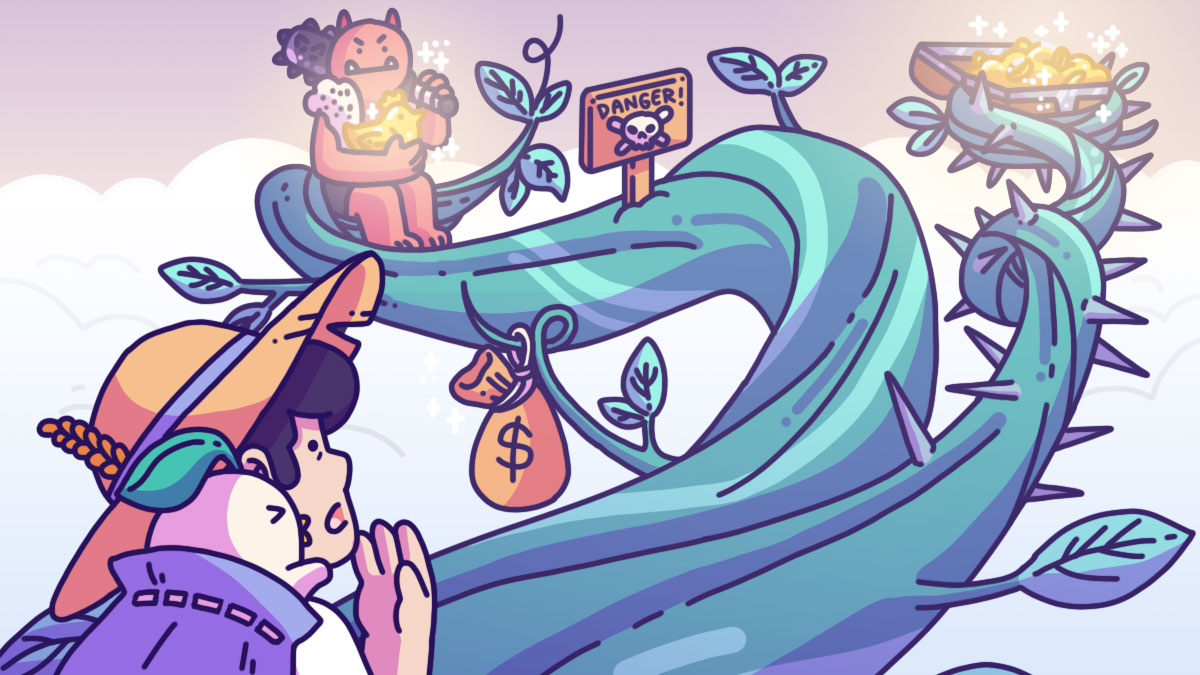
Module 1

Equip Yourself with the Right Tools & Principles for Smarter Investing
Successful investing starts with having the right tools and strategies to make confident, informed decisions. In this module, we'll explore various strategies you can use to grow your money, along with key resources to support you on your financial journey. Here, you will discover how you can plant the seeds of smart investing today to cultivate long-term financial growth in the future.
Before You YOLO Your Money: Let's Talk About Risk and Return
Every reward comes with its own set of risks. In other words, you can't get something for nothing, and nowhere is this truer than in investing. That's because investing is fundamentally about making trade-offs. Every investment decision you make involves choosing between the potential for returns against the level of risk you are willing to accept.
If you want to grow your money faster, you'll likely need to take on more risk - which increases the likelihood that your investment could lose value - or lock your money away for a longer period, sacrificing liquidity. In either case, you will be giving up something in exchange for potentially higher returns.
As an investor, it's important to thoughtfully consider what you're willing to sacrifice, the level of risk you're comfortable with, the time you're able to commit, and the goals you're aiming to achieve.
There is a cost to everything
What you have to give up when you choose one investment option over another is known as opportunity cost. This might mean choosing safer investments like fixed deposits over stocks and missing out on potentially higher gains. Or investing in a riskier asset but being stressed about its volatility all the time.
But doing nothing at all comes with a price too! Holding on to cash without investing it can erode its value over time due to inflation and missed opportunities.
Take the classic fairy tale Jack and the Beanstalk as an example. If Jack hadn't traded his cow for the magic beans and instead kept it until it grew old, he would have missed the opportunity to trade it for something more valuable while it was still worth something. This illustrates the opportunity cost of inaction. Alternatively, Jack could have chosen to keep the cow and sell its milk, providing him with a source of income.
But as we know, Jack did trade the cow for some magic beans, giving up a reliable but modest source of income for something riskier and unknown. The opportunity cost of Jack's decision is what he could have gained if he had sold his cow for money or kept it for milk. This is what he sacrificed for a chance at something greater. It was a bold move, as Jack had no guarantee that the beans would grow.
Fortunately for Jack, his decision paid off as the magic beans ended up growing into a giant beanstalk that led him to treasure. But while everything worked in his favour, it could have easily gone the other way with no beanstalk, no treasure and a loss source of income (the cow).
This highlights a crucial point: investing always involves a level of uncertainty. Understanding the opportunity cost of what you are giving up is just as important as understanding what you might gain. It helps you evaluate your choices better and prompts you to ask yourself what your financial goals are and what are you willing to trade off to reach them. Knowing the answers to these questions will make your investment strategy more intentional.